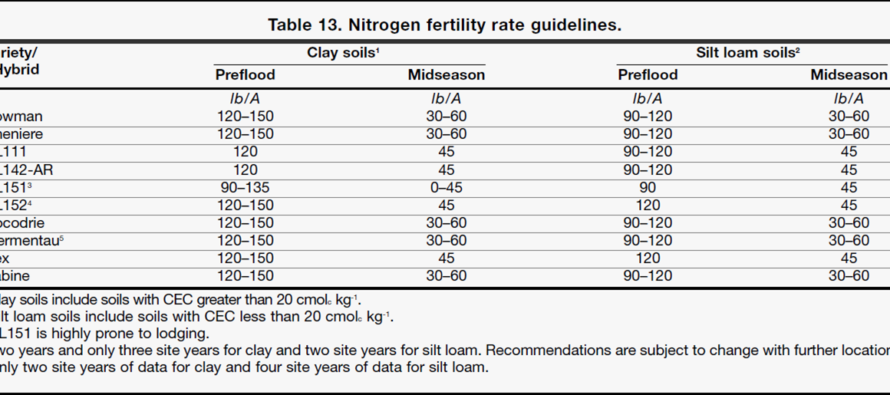Protecting Your Preflood Nitrogen

 Much of the rice in the MS Delta is now planted. The rainfall received over the last week was much needed in many areas and may delay flushing that was about to become a necessity in some planted fields. I received calls from a few consultants earlier in the week stating that the airplane was called and flood establishment was going to begin on select fields. Therefore today’s topic will revolve around properly managing the preflood nitrogen application.
Much of the rice in the MS Delta is now planted. The rainfall received over the last week was much needed in many areas and may delay flushing that was about to become a necessity in some planted fields. I received calls from a few consultants earlier in the week stating that the airplane was called and flood establishment was going to begin on select fields. Therefore today’s topic will revolve around properly managing the preflood nitrogen application.
Numerous research trials conducted throughout the Mid-South Rice Belt suggest that preflood nitrogen sets the yield potential for a rice crop. There are many possible fates of preflood nitrogen after application; we will speak about three, two of which are bad. The first is plant uptake which is what we all strive for; however, we can lose N if mismanaged via ammonia volatilization and nitrification/denitrification reactions. These two gaseous N loss mechanisms are the predominate means of losing effectiveness of N applications to a rice crop.
Ammonia volatilization losses generally occur preflood, when unprotected urea is applied to a soil surface and not incorporated with a timely flood. In general, urea should be incorporated with a permanent flood as quickly as possible. However, keep in mind that many of our production fields in the Delta require more than 10 + days to fully flood. In cases where the producer knows ahead of time you cannot flood a field in a timely fashion, a urea additive containing the active ingredient NBPT is a good insurance policy and will provide additional time to allow for incorporation with minimal N loss due to volatility. Keep in mind that N loss by ammonia volatilization occurs more rapidly on lighter textured rice ground than on heavy “Buckshot†soil. The following products have been University tested in the Mid-South and have proven efficacy in reducing N loss via Ammonia Volatilization. Those products are, AboriteAg, Agrotain, Factor, N-FIXX, N-Yield, and N-Veil.
Nitrification/Denitrification reactions occur when urea is placed far in advance of a flood. How far advanced is too far? Well recent research published by Mr. Paxton Fitts, during his Master’s research, suggests that many of the soils we routinely crop to rice in the Delta can convert urea into nitrate within 6-10 days after an application. Nitrogen that is allowed to undergo the nitrification process will be lost form the plant as well as the soil system shortly after the soil becomes anaerobic. There are limited active ingredients that minimize this conversion process. Two currently on the market and labeled for rice production in MS are DCD and Nitrapyrin.
Also keep in mind that each year the rice agronomy program conducts the variety x nitrogen trials annually to help establish guidelines for N application rates for current rice varieties being cultivated in MS. This information can be observed in the annual variety trial booklet and is attached here. In addition, past information in the form of Rice Promotion Board Annual Research reports can be located at: http://rice.msstate.edu/.





Let me tell You a sad story ! There are no comments yet, but You can be first one to comment this article.
Write a comment